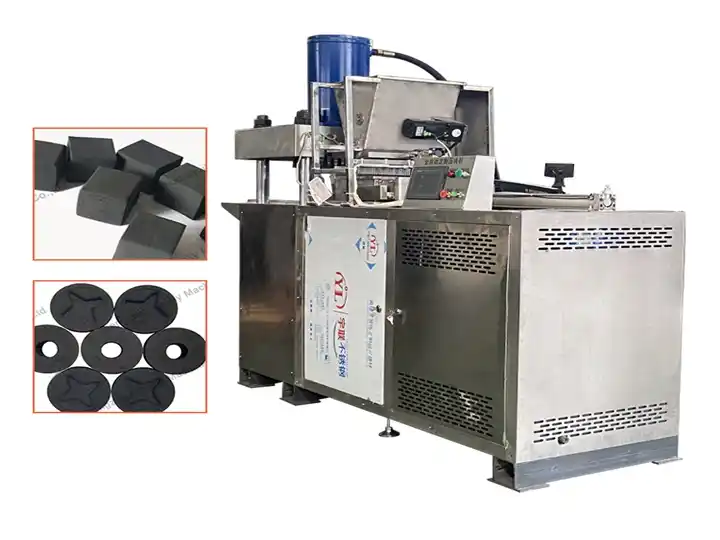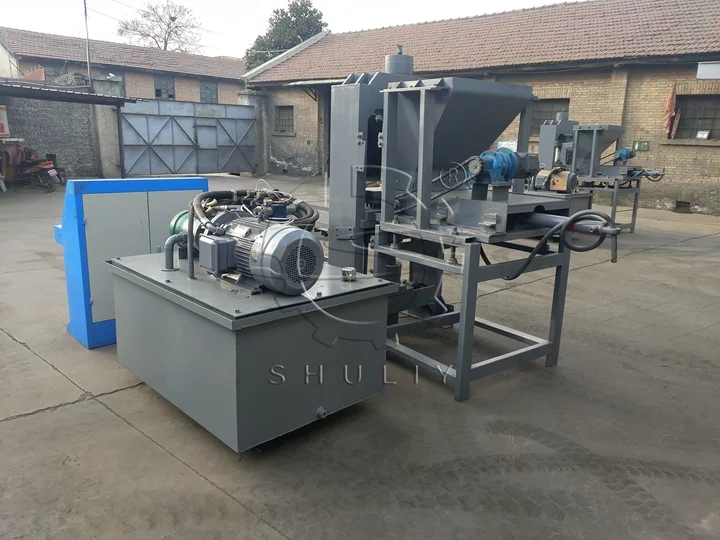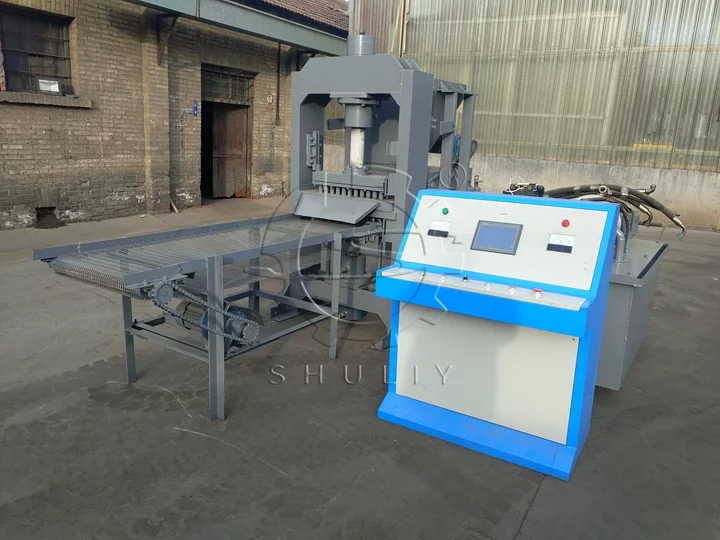Which Charcoal is Best for Hookah?
Hookah (also known as Shisha), made using a hookah charcoal press machine, is a popular form of social smoking. Charcoal plays a crucial role—not only as the heat source for the tobacco paste, but also in affecting the purity of the smoke, the flavor, and the overall smoking experience.
So, which type of charcoal is best for hookah? This article will introduce several mainstream charcoal types and compare them from different angles to help you choose the one that best suits your taste and usage needs.
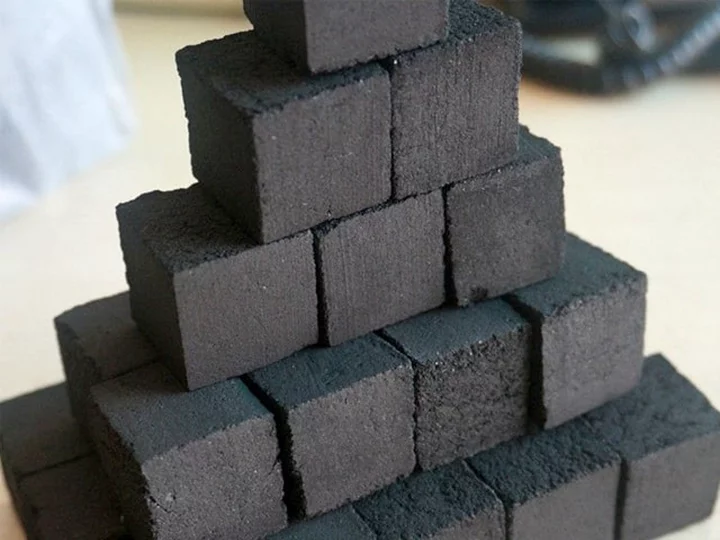
Coconut Shell Charcoal
- Made from 100% natural carbonized coconut shells, it is the most popular type of hookah charcoal.
- It has high density and long burn time (each piece can last 60–120 minutes).
- It delivers stable, high heat with almost no odor or chemical residue.
- Ash content is very low (<2%), producing little smoke, minimal ash, and fine white residue.
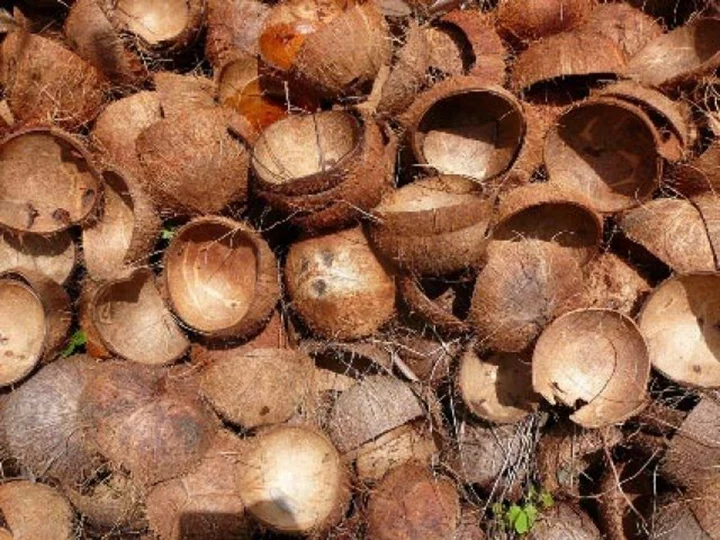
Advantages
- Pure taste that doesn’t interfere with tobacco flavor
- Uniform shape, easy to handle
- Low residue, not easy to get out
Disadvantages
- Slightly more expensive than quick-light charcoal
- Takes longer to ignite (about 6–10 minutes, requires an electric stove or charcoal burner)
Best for
Experienced hookah users and those who value flavor and health.
Bamboo Charcoal
Made from mature bamboo through high-temperature carbonization. Bamboo grows quickly and is renewable, making it an eco-friendly charcoal source.
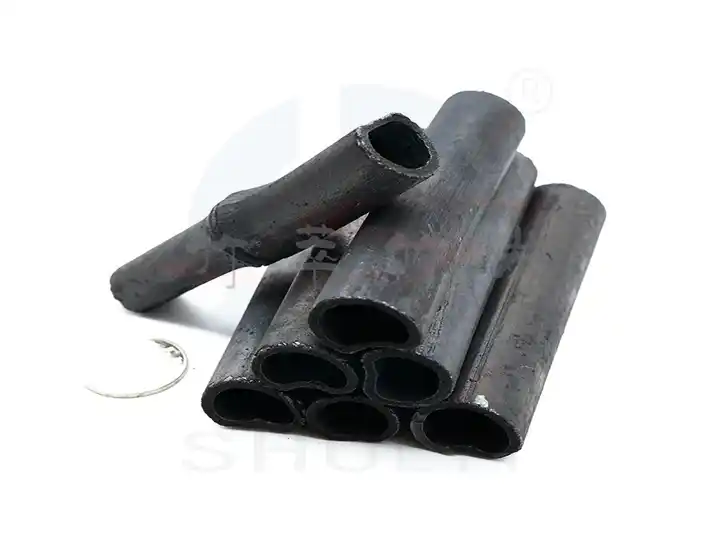
Advantages
- Strong heat with high ignition temperature (up to 700–800°C)
- Lights quickly, suitable for fast use
- Mild woody aroma, considered more natural by some users
- Environmentally friendly and highly sustainable
Disadvantages
- Slightly shorter burn time (about 50–70 minutes per piece)
- Higher ash content (around 7–10%)
- Less dense and durable compared to coconut charcoal
Best for
Users who value eco-friendliness and want a fast-lighting experience.
Quick Light Charcoal
Contains accelerants like magnesium nitrate and is usually made into 33mm or 40mm compressed round discs, also called “magic charcoal” or “instant light charcoal.
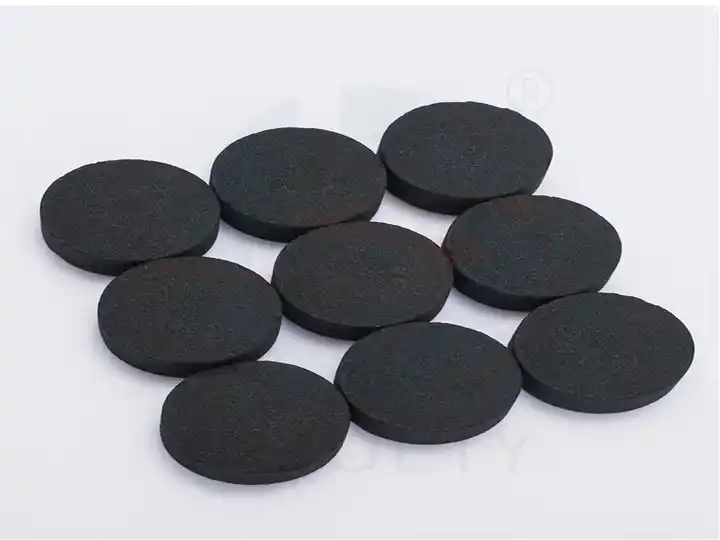
Advantages
- Lights very quickly (within seconds)
- Easy to use; can be lit directly with a lighter or torch
- Ideal for outdoor, travel, or emergency use without heating devices
Disadvantages
- Contains accelerants and chemical binders, may produce a strong, unpleasant smell when burning
- Short burn time (about 30–40 minutes)
- It can sometimes affect the hookah flavor, even giving a chemical taste
Best for
Emergency users, outdoor use, and people without charcoal burners.
Natural Hardwood Charcoal
Made from natural woods like lemonwood, olive wood, beech, etc.Has a natural flavor, sometimes with a woody aroma.
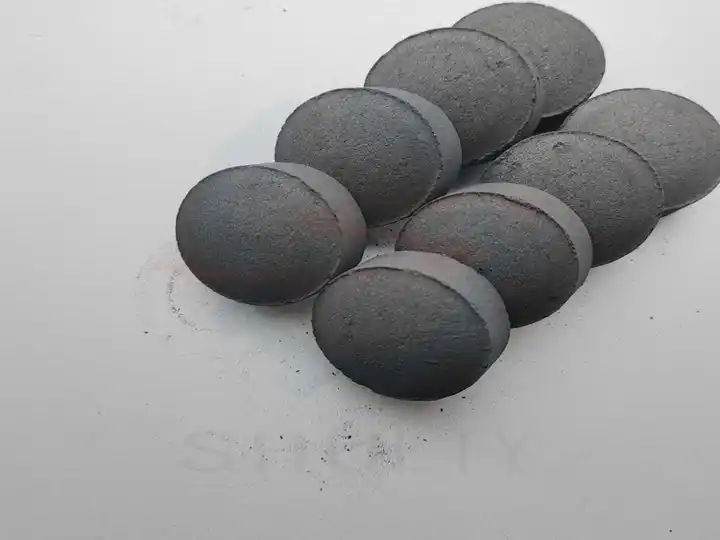
Advantages
- Natural ingredients, no chemical additives
- Some types cost less than coconut charcoal
Disadvantages
- Heat output is unstable, producing more ash
- Easily cracks and has irregular shapes
- Less uniform than coconut charcoal, shorter burn time
Best for
Users who prefer traditional flavors and want a budget option.
Non-Hookah Charcoal
Commonly used for BBQ, such as charcoal briquettes with binders or blocks containing coal tar.
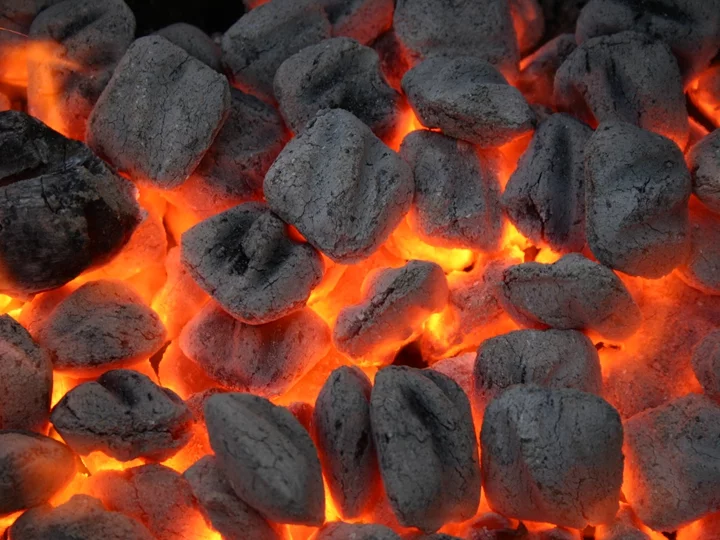
Advantages
- Low cost and widely available
- Suitable for grilling or general heating (non-smoking purposes)
Disadvantages
- Contains chemicals like coal tar and binders
- Produces heavy smoke and a strong odor when burning
- May release harmful gases, posing health risks
- Severely affects hookah flavor—not recommended for hookah use
Best for
Not recommended for hookah use; only suitable for BBQ or other non-smoking purposes.
How to Identify High-Quality Hookah Charcoal?
- Check the color: Good charcoal has an even color with no visible impurities or spots
- Look at the ash: After burning, it should leave fine, white ash—indicating pure raw material
- Test the hardness: High-quality charcoal sounds crisp when tapped and doesn’t break easily
- Burn duration: Should last at least 60–90 minutes
- No odor: Burns without any sharp or chemical smells
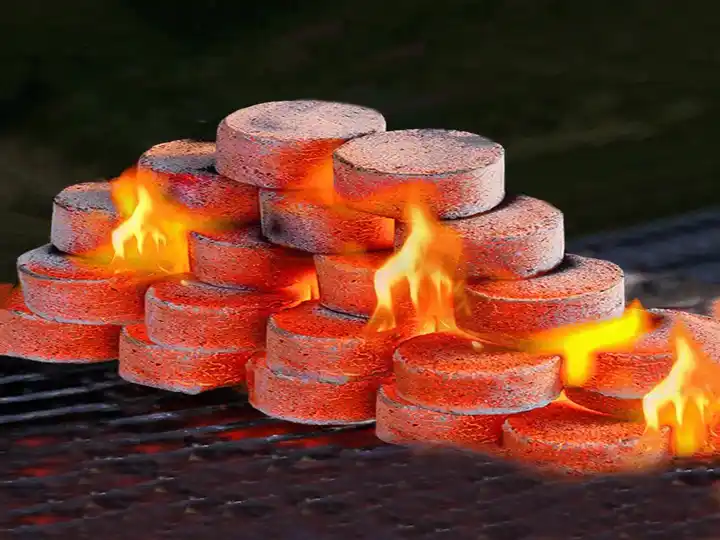
Charcoal Types Not Suitable for Hookah
BBQ Charcoal / Briquettes
Commonly used for grilling; often made with petroleum coke, coal dust, chemical binders, or additives.
Disadvantages
- Produces strong, unpleasant smoke and odor when burning
- Can release harmful chemicals, posing serious health risks when inhaled
- Greatly affects the flavor of hookah
Conclusion
Absolutely not recommended for hookah use. These are non-food-grade charcoal products.
Low-Quality Quick Light Charcoal
Some off-brand quick-light charcoals are actually repackaged incense or industrial charcoal, with unknown ingredients and uncontrollable quality
Disadvantages
- Burns inconsistently and may spark
- Emits strong chemical odors with harsh fumes
- It can ruin the tobacco flavor and may cause dizziness, headaches, or throat irritation
Conclusion
Commonly used for religious or industrial purposes—not suitable for hookah use.
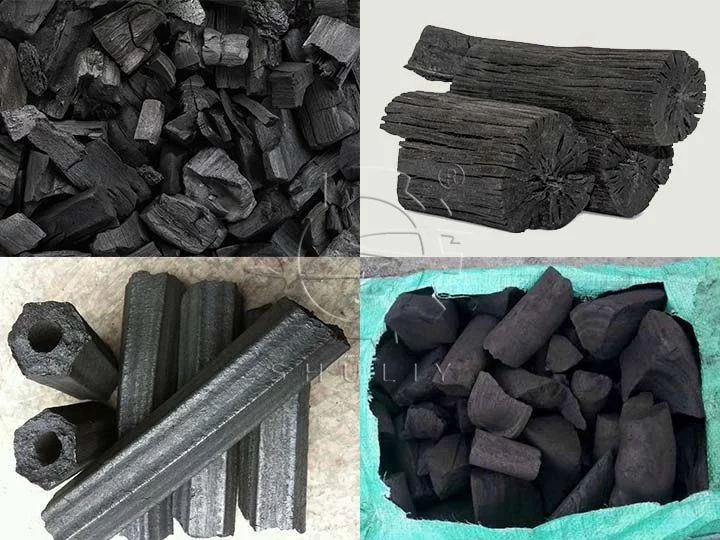
Charcoal with Additives or Chemical Fillers
Charcoal products not labeled as “100% natural” may contain coal tar, heavy metals, polycyclic aromatic hydrocarbons (PAHs), and other harmful substances.
Disadvantages
- Releases toxic pollutants when burned
- Studies show these pollutants can be much higher than those from tobacco itself
- Pose potential risks to the respiratory and nervous systems
Conclusion
For health and safety, always choose certified natural hookah charcoal and avoid charcoal products with unknown origins.
Hookah Charcoal Production – Hookah Charcoal Press Machine
The hookah charcoal press machine is widely used for shaping charcoal powder and coal into briquettes. It is an essential piece of equipment for deep processing of charcoal and coal powder, ensuring consistent product quality.
The hookah charcoal tablet press machine mixes charcoal powder with a binder at a set ratio, then uses a high-pressure mold to press it into uniform tablets or blocks. The core principle is applying hydraulic or mechanical pressure to compact the loose powder into a dense, hard, and stable-burning shape.
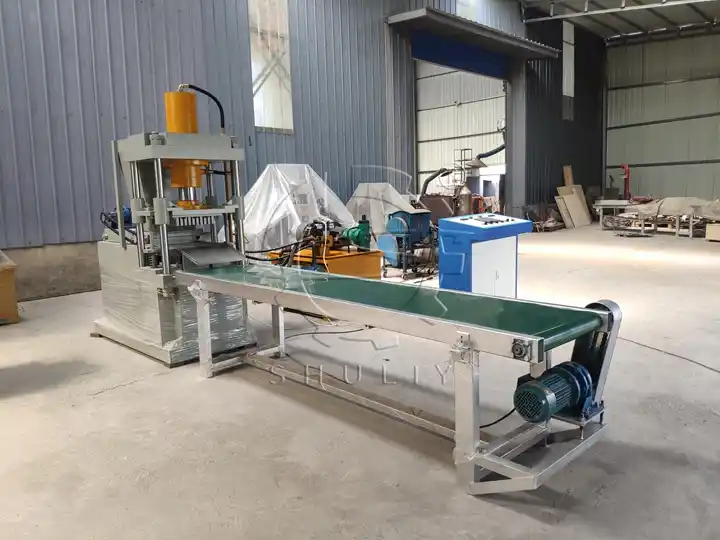
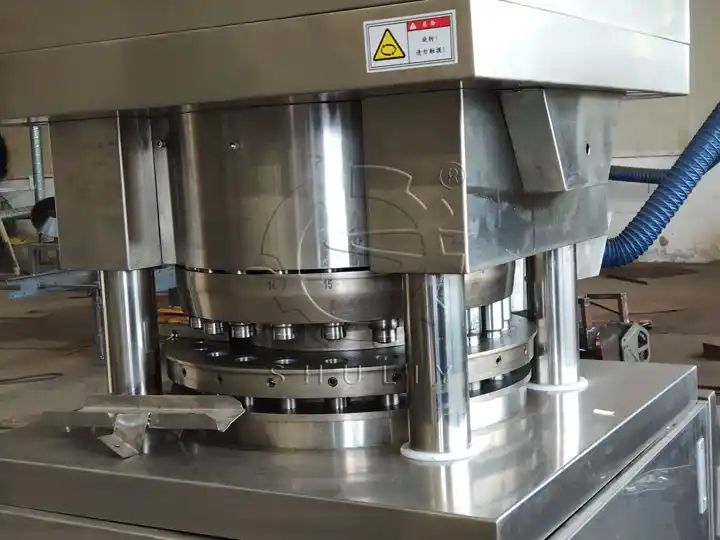
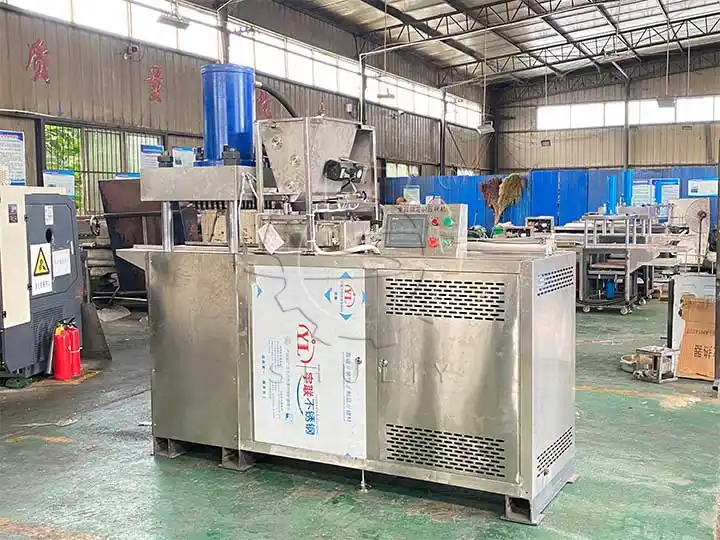
Typical production process
- Feeding: Charcoal powder is fed into the mold cavity by the feeding system
- Pressing: Upper and lower molds press the powder into a fixed shape (e.g., 33mm round disc)
- Auto demolding: Pressed pieces are pushed out of the mold and sent to the conveyor or cooling area
- Cooling & packaging: After cooling, the tablets are sorted, counted, and packaged
This machine is ideal for large-scale production of high-quality quick-light and hookah charcoal. It offers high automation, simple operation, and efficient forming.
Recommended Model
Model: SL-HS-1
Pressure: 60 tons
Weight: 2800 kg
Hydraulic pump power: 15 kW
Main unit size: 1000 × 2100 × 2000 mm
Feeding power: 0.75 kW
Discharge power: 0.75 kW
Discharge conveyor size: 800 × 850 × 1850 mm
Control cabinet size: 530 × 900 × 1100 mm
Capacity:
42 pieces per press, 4 presses per minute (round type)
44 pieces per press, 4 presses per minute (cube type)
Recommendations for Home and Commercial Use
Home Users
If you only use hookah occasionally and prefer simple equipment, quick-light charcoal can save the hassle of lighting.
However, for a better smoking experience, it’s recommended to use an electric stove or charcoal burner and opt for natural coconut shell charcoal, which offers a cleaner flavor and longer-lasting sessions.
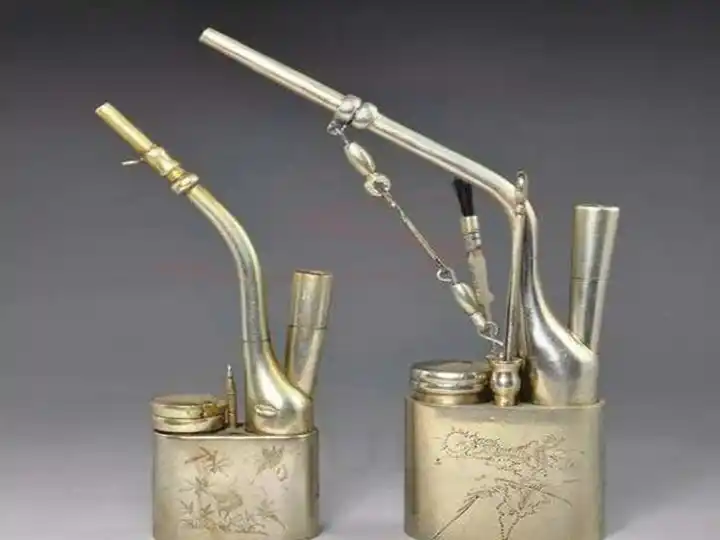
Commercial Hookah Lounges
Most hookah lounges still rely mainly on natural coconut shell charcoal to ensure consistent flavor and longer session times.
Shops typically keep 3–6 boxes of natural charcoal blocks (25–33mm) in stock for daily use and use commercial charcoal burners for centralized lighting.
To improve efficiency, some lounges may also keep quick-light charcoal rolls on hand for rapid hookah setup or table-side charcoal replacement.
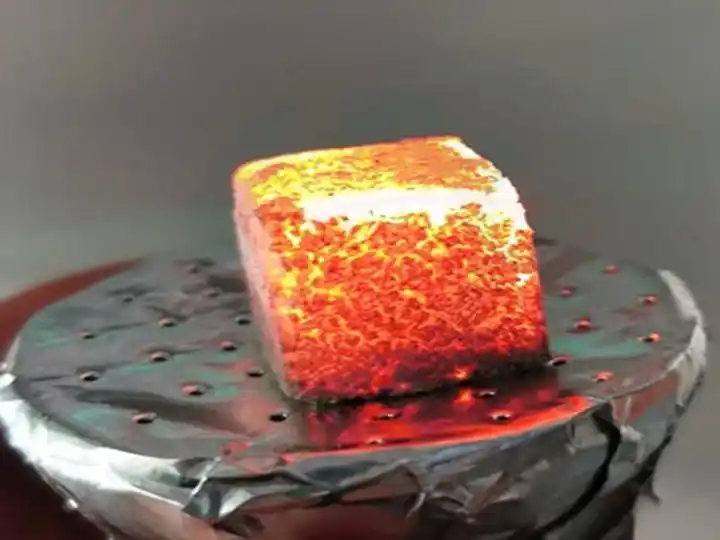
Brand Recommendations
Coconut Shell Charcoal
Recommended brands include CocoBrico, Titanium, CocoNara, CocoLoco, and Al Fakher.
These products are typically 25–33mm square charcoal blocks with a burn time of over 1 hour, offering stable heat and minimal odor — ideal for a clean hookah experience.
Quick-Light Charcoal Brands
Popular options include Three Kings, Holland, Starbuzz Quick Light, and CocoFuego.
They are usually sold in 33mm (small) or 40mm (large) round tablets, commonly packaged as 10 rolls × 10 tablets (100 pieces per box), providing convenient and fast lighting for casual or backup use.
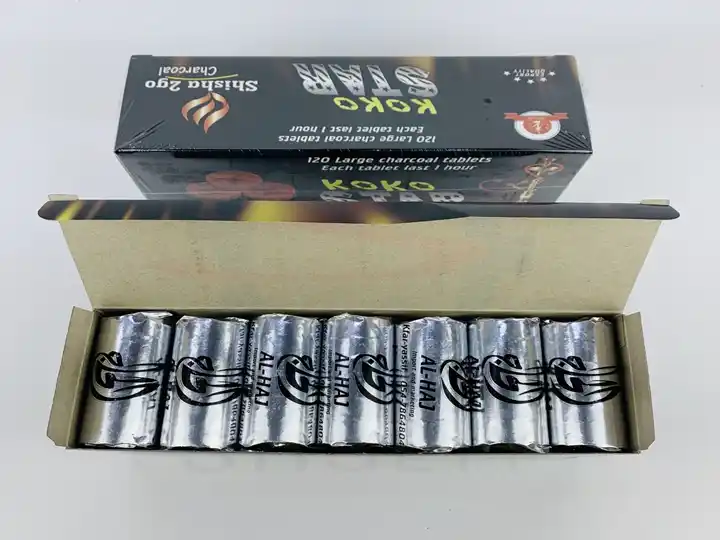
What Makes a Quality Charcoal?
Producing premium hookah charcoal is not simply about burning wood — it’s a carefully controlled industrial process involving precise regulation of temperature, ingredients, moisture, and shape. A qualified hookah charcoal product should meet the following standards:
- Made from 100% natural materials (no nitrates or coal additives)
- Burn time ≥ 60 minutes
- Ash content ≤ 3%
- No odor, no smoke, no cracking
Conclusion
Choosing the right charcoal is the first step to enhancing your hookah experience.
We recommend high-density coconut shell charcoal — while slightly more expensive, it delivers a cleaner, longer-lasting, and more authentic flavor that’s well worth the investment.
If you’re interested in wholesale, processing, or custom production of hookah charcoal, feel free to contact us. We offer complete equipment and solutions, from coconut shell charcoal briquette presses to full carbonization systems.

